Scutellaria mexicana, Bladder Sage
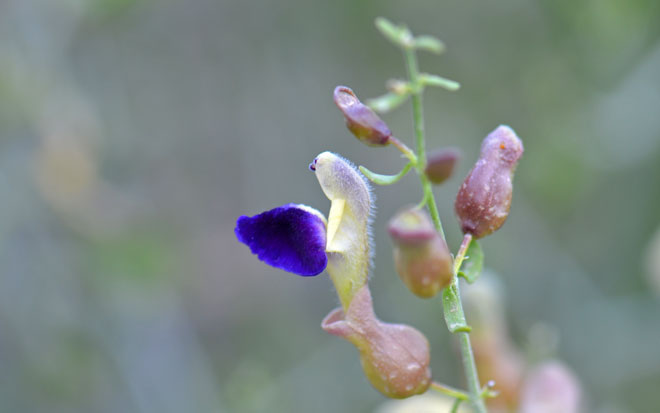
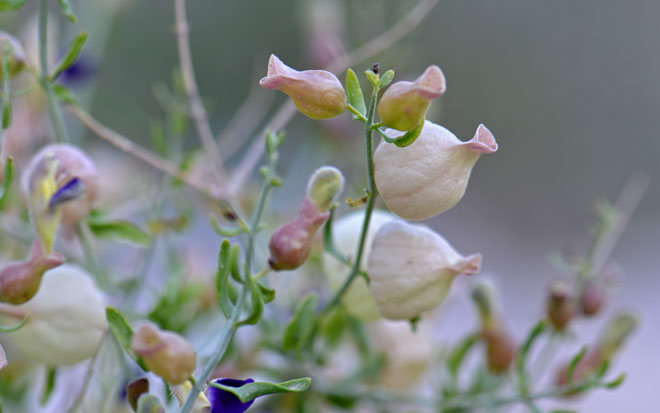
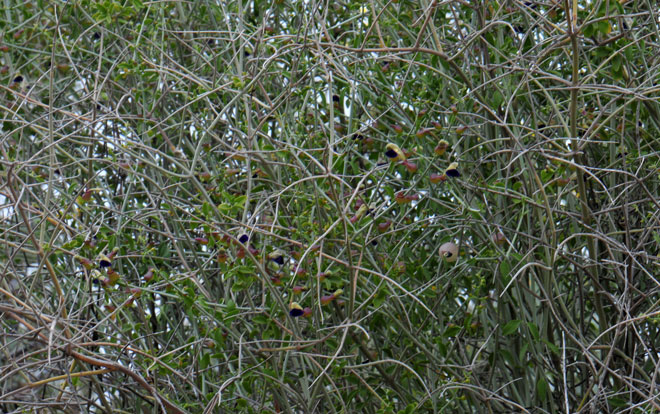
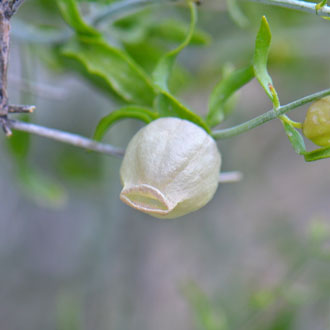
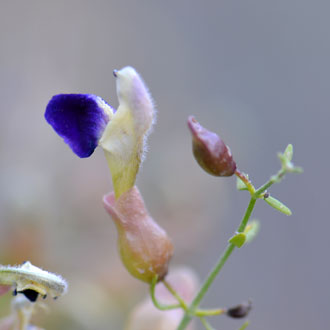
Scientific Name: Scutellaria (Salazaria) mexicana
Common Name: Bladder Sage
Also Called: Bladdersage, Mexican Bladdersage, Mexican Paper Bag Bush, Paper Bag Bush
Family: Lamiaceae or Mint Family
Synonyms: (Salazaria mexicana)
Status: Native
Duration: Perennial
Size: Up to 3 ½ feet or more.
Growth Form: Shrub; plant profile rounded, erect multiple upright and lateral branches, branches woody, branch tips spiny or sub-spiny.
Leaves: Green; sparsely leaved, leaves inconspicuous, deciduous under dry conditions, sessile-like or with short petioles, ovoid to elliptic, glabrous or puberulous.
Flower Color: Purple and light violet or whitish; attractive medium size 2-lipped flowers that face away from each other, upper lip variable white to violet, upper leaves pubescent lower lip 3-lobed and a darker violet, flowers borne in axils, fruit containing 4 nutlets surrounded by dried
calyx lobes collectively resembling a bag, pouch or bladder, bags persisting for a short time.
Flowering Season: March to May in Arizona; to June in California.
Elevation: Below 3,000 feet.
Habitat Preferences: A variety of habitat types across their entire range; foothills and washes in creosote-bush communities, mostly deserts but reaching lower margins of the pinyon-juniper zones.
Recorded Range: In the United States, Bladder Sage is found in western Arizona, southwest California, southern Nevada, and a small disjunct population in west Texas (Brewster County). Also found in Baja California and northern Mexico.
North America & US County Distribution Map for Scutellaria mexicana as Salazaria mexicana.
U.S. Weed Information: No information available.
Invasive/Noxious Weed Information: No information available.
Wetland Indicator: No information available.
Threatened/Endangered Information: No information available.
Genus Information: 45 species in Scutellaria in the United States. 4 species in Arizona, 9 species in California, 6 species in New Mexico and 18 species in Texas.
The Plant List includes 801 scientific plant names of species rank for the genus Scutellaria. Of these 468 are accepted species names.
Comments: Bladdersage is a desert species found in the Mojave, Sonora, and Colorado deserts. It is lightly grazed by cattle and horses particularly when forage is scarce or in the southern climes within its range.
The genus name change to Scutelliaria is relatively new and some sources are still using Salazaria.
Also see in Southwest Desert Flora; Mexican Skullcap, Scutellaria platyphylla.

